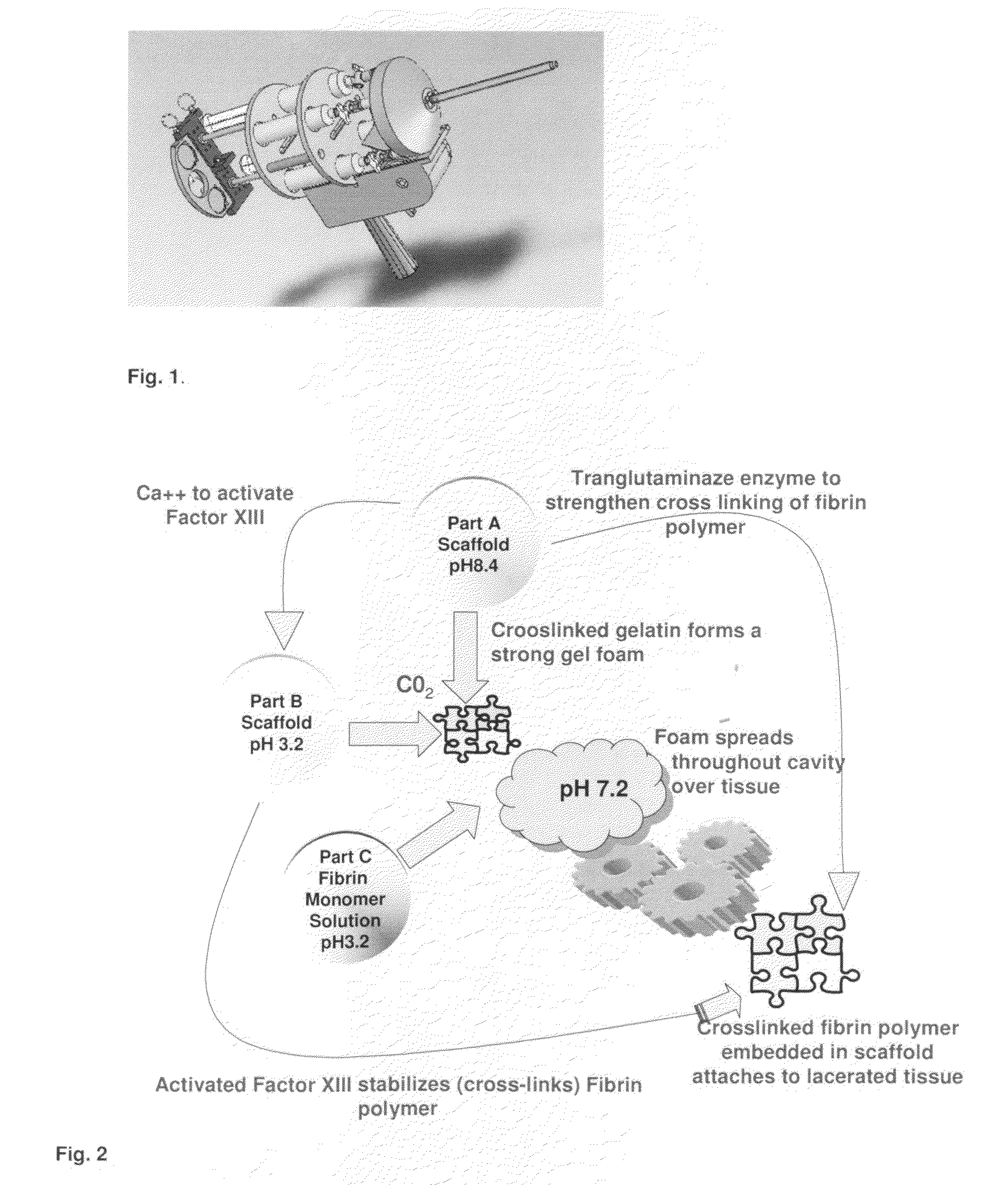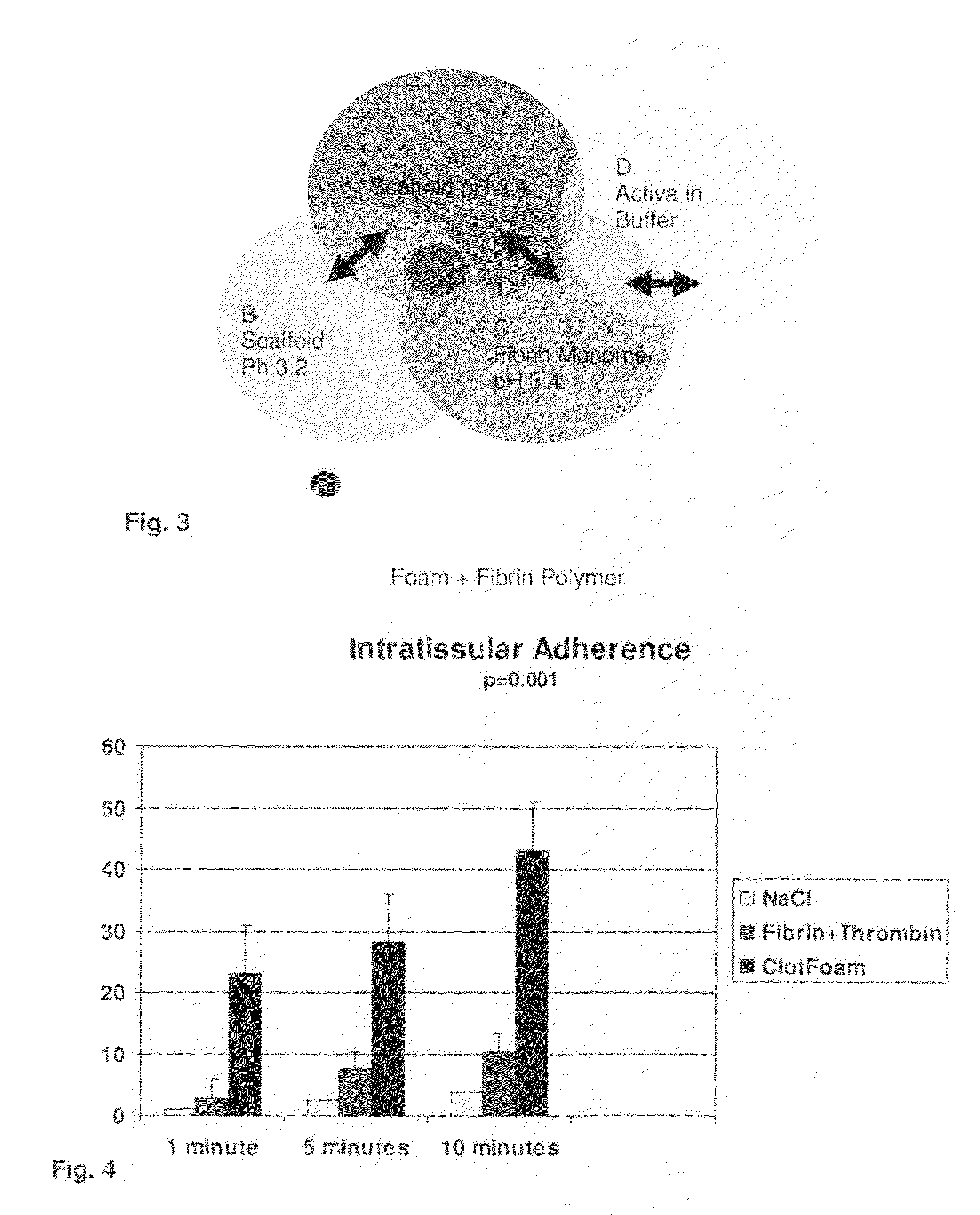Tissue Sealant for Use in Non Compressible Hemorrhage
a tissue sealant and hemorrhage technology, applied in the direction of prosthesis, extracellular fluid disorder, peptide/protein ingredients, etc., can solve the problems of traumatic injury being a frequent cause of morbidity and mortality worldwide, hemorrhage still remains, late death and complications, etc., to achieve excellent hemostatic agent candidate, minimal risk, and little training
- Summary
- Abstract
- Description
- Claims
- Application Information
AI Technical Summary
Benefits of technology
Problems solved by technology
Method used
Image
Examples
examples
[0088]1. Adhesion and viscoelastic properties: The adhesion characteristics to vital human tissue and the kinetics of polymerization of the gel have been tested in-vitro a ex-vivo studies.
1.1. Adhesion Properties
[0089]Adhesion and tensile measurements (Intratissular adherence and clot strength) were conducted in Sprague-Dawley rats liver tissue. The liver was chosen because is the most frequently damaged organ in intraperitoneal trauma followed by the spleen. Experimental Models Sprague-Dawley rats (250 to 300 g) were anesthetized. The abdominal cavity was approached medially and the liver was completely dissected out and excised. The liver was chosen because it is the most frequently damaged organ in intraperitoneal non-compressible hemorrhage followed by the spleen. We conducted adhesion and tensile studies with an isometric transducer.
1.1.1 Tensil Measurements: The two largest lobes separated. One lobe was attached to a holder that was fixed later to the isometric transducer. The...
PUM
| Property | Measurement | Unit |
|---|---|---|
| concentration | aaaaa | aaaaa |
| concentration | aaaaa | aaaaa |
| pH | aaaaa | aaaaa |
Abstract
Description
Claims
Application Information
 Login to View More
Login to View More - R&D
- Intellectual Property
- Life Sciences
- Materials
- Tech Scout
- Unparalleled Data Quality
- Higher Quality Content
- 60% Fewer Hallucinations
Browse by: Latest US Patents, China's latest patents, Technical Efficacy Thesaurus, Application Domain, Technology Topic, Popular Technical Reports.
© 2025 PatSnap. All rights reserved.Legal|Privacy policy|Modern Slavery Act Transparency Statement|Sitemap|About US| Contact US: help@patsnap.com



